Jaewe Heo
Choose Your Own Question: Encouraging Self-Personalization in Learning Path Construction
May 08, 2020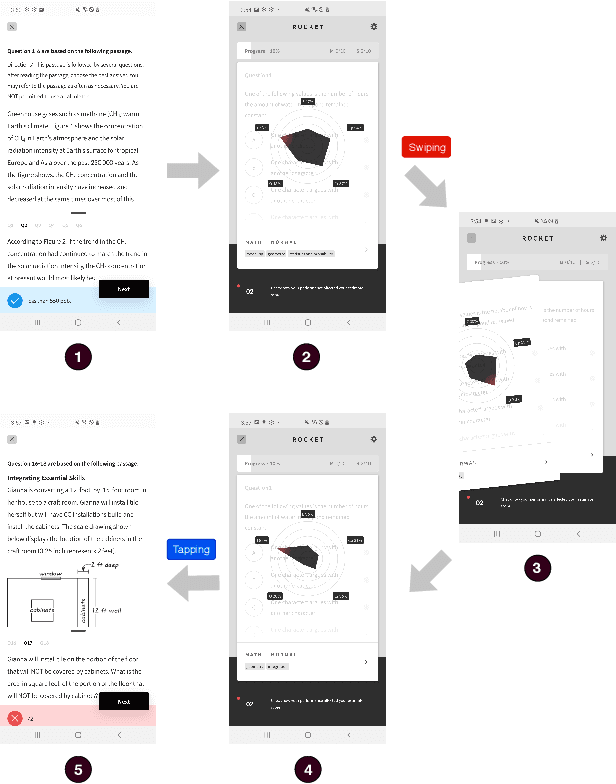
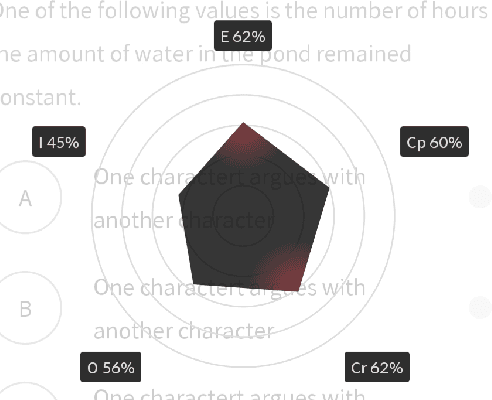
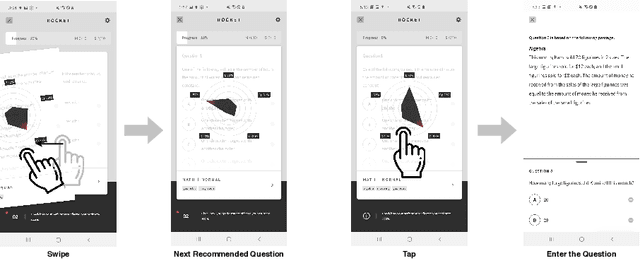

Abstract:Learning Path Recommendation is the heart of adaptive learning, the educational paradigm of an Interactive Educational System (IES) providing a personalized learning experience based on the student's history of learning activities. In typical existing IESs, the student must fully consume a recommended learning item to be provided a new recommendation. This workflow comes with several limitations. For example, there is no opportunity for the student to give feedback on the choice of learning items made by the IES. Furthermore, the mechanism by which the choice is made is opaque to the student, limiting the student's ability to track their learning. To this end, we introduce Rocket, a Tinder-like User Interface for a general class of IESs. Rocket provides a visual representation of Artificial Intelligence (AI)-extracted features of learning materials, allowing the student to quickly decide whether the material meets their needs. The student can choose between engaging with the material and receiving a new recommendation by swiping or tapping. Rocket offers the following potential improvements for IES User Interfaces: First, Rocket enhances the explainability of IES recommendations by showing students a visual summary of the meaningful AI-extracted features used in the decision-making process. Second, Rocket enables self-personalization of the learning experience by leveraging the students' knowledge of their own abilities and needs. Finally, Rocket provides students with fine-grained information on their learning path, giving them an avenue to assess their own skills and track their learning progress. We present the source code of Rocket, in which we emphasize the independence and extensibility of each component, and make it publicly available for all purposes.
Towards an Appropriate Query, Key, and Value Computation for Knowledge Tracing
Feb 14, 2020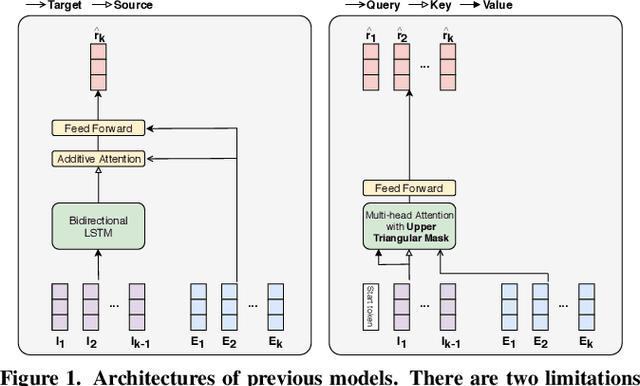
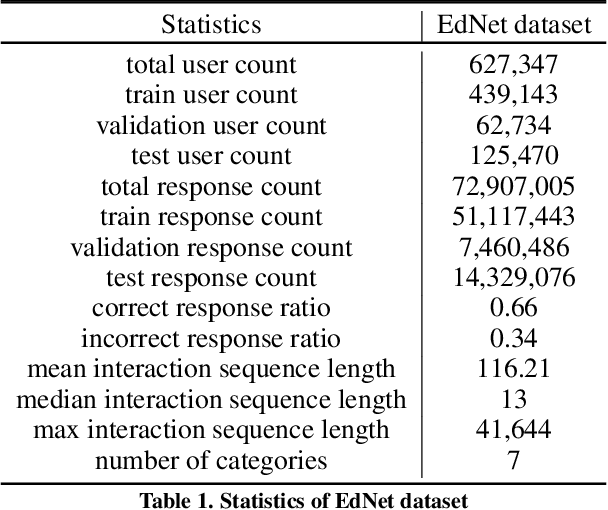
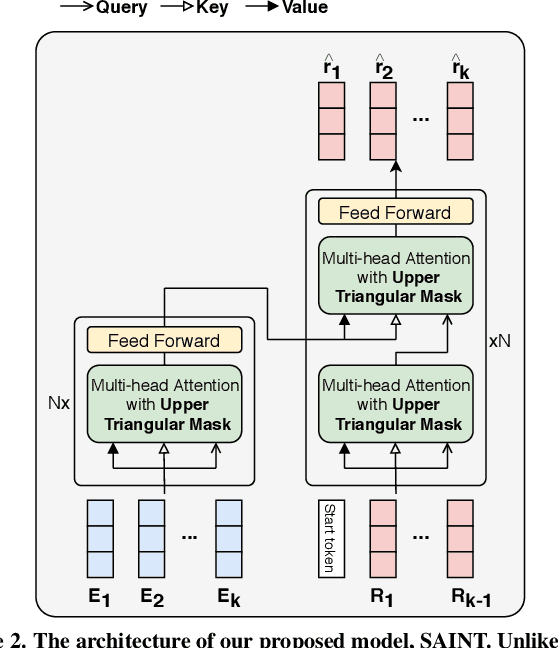
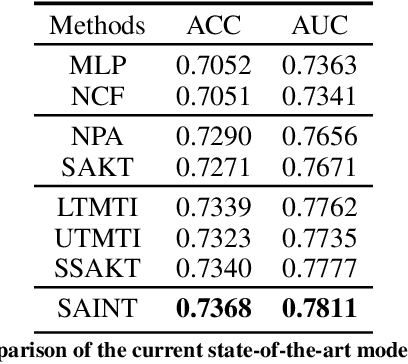
Abstract:Knowledge tracing, the act of modeling a student's knowledge through learning activities, is an extensively studied problem in the field of computer-aided education. Although models with attention mechanism have outperformed traditional approaches such as Bayesian knowledge tracing and collaborative filtering, they share two limitations. Firstly, the models rely on shallow attention layers and fail to capture complex relations among exercises and responses over time. Secondly, different combinations of queries, keys and values for the self-attention layer for knowledge tracing were not extensively explored. Usual practice of using exercises and interactions (exercise-response pairs) as queries and keys/values respectively lacks empirical support. In this paper, we propose a novel Transformer based model for knowledge tracing, SAINT: Separated Self-AttentIve Neural Knowledge Tracing. SAINT has an encoder-decoder structure where exercise and response embedding sequence separately enter the encoder and the decoder respectively, which allows to stack attention layers multiple times. To the best of our knowledge, this is the first work to suggest an encoder-decoder model for knowledge tracing that applies deep self-attentive layers to exercises and responses separately. The empirical evaluations on a large-scale knowledge tracing dataset show that SAINT achieves the state-of-the-art performance in knowledge tracing with the improvement of AUC by 1.8% compared to the current state-of-the-art models.
Assessment Modeling: Fundamental Pre-training Tasks for Interactive Educational Systems
Jan 01, 2020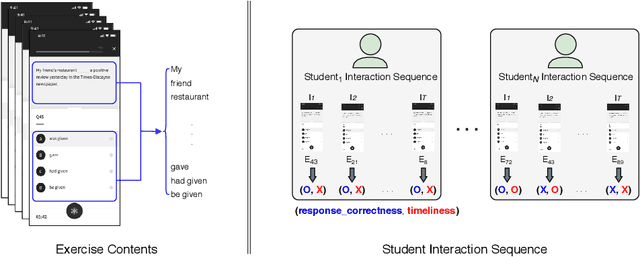

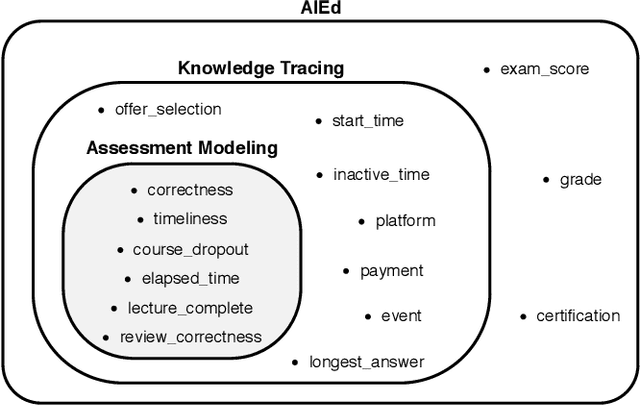

Abstract:Interactive Educational Systems (IESs) have developed rapidly in recent years to address the issue of quality and affordability of education. Analogous to other domains in AI, there are specific tasks of AIEd for which labels are scarce. For instance, labels like exam score and grade are considered important in educational and social context. However, obtaining the labels is costly as they require student actions taken outside the system. Likewise, while student events like course dropout and review correctness are automatically recorded by IESs, they are few in number as the events occur sporadically in practice. A common way of circumventing the label-scarcity problem is the pre-train/fine-tine method. Accordingly, existing works pre-train a model to learn representations of contents in learning items. However, such methods fail to utilize the student interaction data available and model student learning behavior. To this end, we propose assessment modeling, fundamental pre-training tasks for IESs. An assessment is a feature of student-system interactions which can act as pedagogical evaluation, such as student response correctness or timeliness. Assessment modeling is the prediction of assessments conditioned on the surrounding context of interactions. Although it is natural to pre-train interactive features available in large amount, narrowing down the prediction targets to assessments holds relevance to the label-scarce educational problems while reducing irrelevant noises. To the best of our knowledge, this is the first work investigating appropriate pre-training method of predicting educational features from student-system interactions. While the effectiveness of different combinations of assessments is open for exploration, we suggest assessment modeling as a guiding principle for selecting proper pre-training tasks for the label-scarce educational problems.
 Add to Chrome
Add to Chrome Add to Firefox
Add to Firefox Add to Edge
Add to Edge